Vermont is known for its dairy farms, vast forests, and scenic mountains. What kind of dangerous animals can be found in the sixth smallest state of the United States? Are there bears in the mountains? What about mountain lions? Are there any venomous snakes in the state? What about stinging bees and wasps? Let’s find out about some of the most dangerous animals in Vermont.
Are There Bears In Vermont?
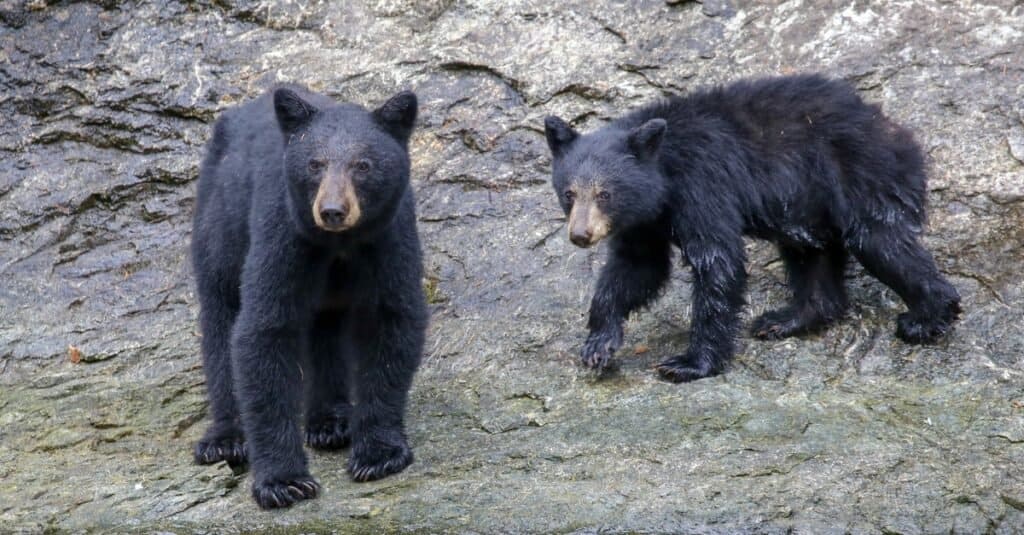
Black bears are one of the most dangerous animals in Vermont, but attacks are rare.
©CSNafzger/Shutterstock.com
Black bears are one of the most dangerous animals in Vermont. There are no grizzly bears in Vermont. Grizzly bears are more dangerous than black bears, but both are dangerous. Bear attacks are rare in the United States, but they happen. With the number of bears in the state on the rise, bear-human interactions are more likely. There are an estimated 4,500-6,000 black bears in Vermont. In 2020, the Vermont Fish and Wildlife cited an increase in bear complaints, with 162 reports of bears attacking chickens. Pets are also at risk, with a report of three dogs killed by bears in the summer of 2017. Keeping all food sources, including pet food inside, helps deter bears from coming into residential areas. Attacks on humans are still very rare.
Are There Mountain Lions In Vermont?

There are no mountain lions in Vermont.
©Scott E Read/Shutterstock.com
Mountain lions are not the most dangerous animals in Vermont because there are no mountain lions there. There are no mountain lions east of the Mississippi River, except for a small population of Florida panthers in the southern part of Florida. Mountain lions are also called cougars, pumas, and panthers.
Are Moose The Most Dangerous Animals In Vermont?
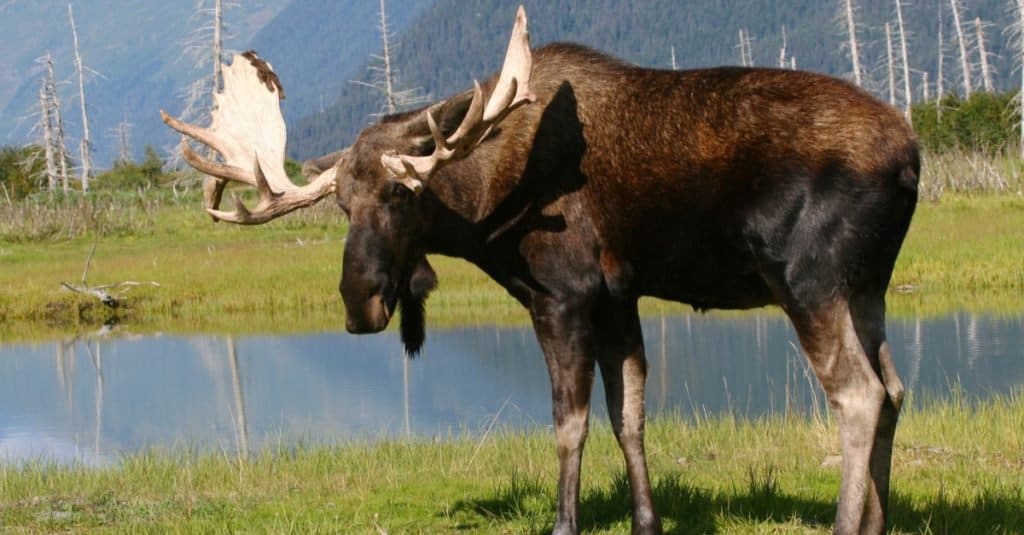
Moose can weigh 1,400 lbs and have large antlers that can be 5 feet wide!
©Steve Bower/Shutterstock.com
Moose can be dangerous animals. They are the second-largest mammals in North America, reaching 6 feet at the shoulder and weighing up to 1,400lbs. Bull moose grow antlers every year that can be up to 5 feet wide. Can you imagine a 5-foot wide rack running towards you? In Vermont, you can find moose in the wetlands of the Northeast Kingdom and at the West Mountain Wildlife Management area. Moose attacks in Vermont have been recorded, with an example of one being caught on video. In Westford, VT, Brent Olson went outside to find a moose climbing on his car. He tried to scare the moose away and then grabbed his video camera. You can see how quickly the moose goes from just standing there to charging at the man while taping.
Moose can also be dangerous when they are on the highways and roads. In 2021, there were 41 moose hit by vehicles. Fish and Wildlife officials warn people to be more aware during the breeding season and sunset when these animals are on the move.
What Dangerous Venomous Animals Live In Vermont?
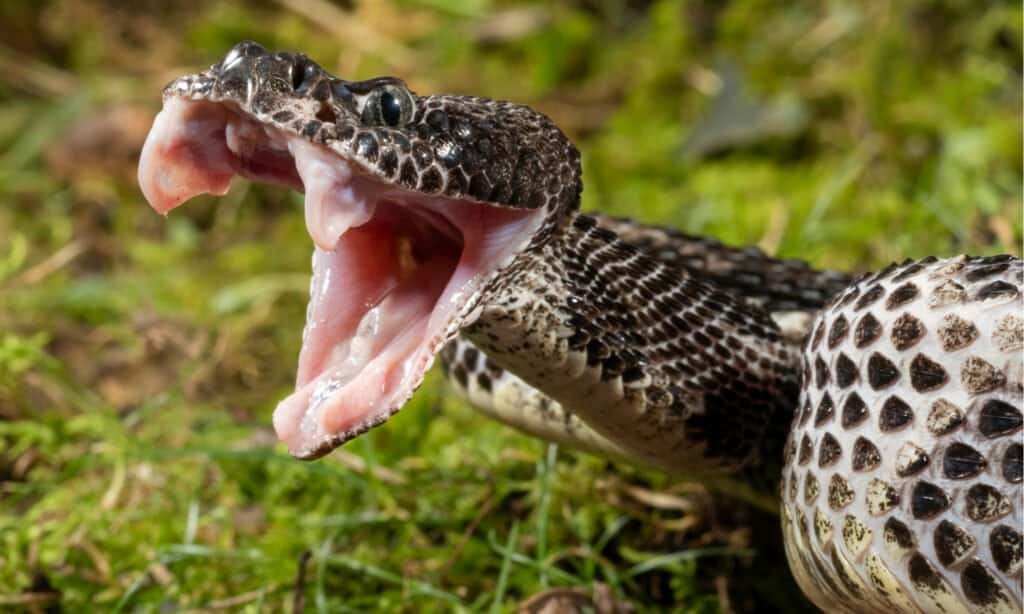
In the US, there are 7,000-8,000 venomous snake bites a year, with only an average of 5 being fatal.
©Joe McDonald/Shutterstock.com
- Rattlesnakes: Rattlesnakes are dangerous, but there are very few in Vermont. There is only one species of rattlesnake in Vermont. The timber rattlesnake is an endangered animal in the state and can only be found in Rutland County. In the United States, there are between 7,000-8,000 venomous snake bites, but only an average of five is fatal. If you get bit by a snake, you should seek immediate medical attention.
- Spiders: The spiders in Vermont are not dangerous animals. They can bite, but are not harmful to humans. There are no confirmed black widow bites in the last 15 years according to the Northern New England Poison Center. Vermont does not have any brown recluse spiders either. Black widows and brown recluse are two of the most venomous spiders in the United States.
- Scorpions: There are no venomous scorpions in Vermont. The Arizona bark scorpion is the most venomous scorpion in the United States, but there are none in Vermont. If you see a creature that looks like a scorpion, it may be a pseudoscorpion. These creatures are relatives of the scorpion, but are not venomous. They are also tiny, only about 1/5 of an inch. So, pseudoscorpions are not the most dangerous animals in Vermont!
What Dangerous Animals Are On Grand Isle Island, Vermont?
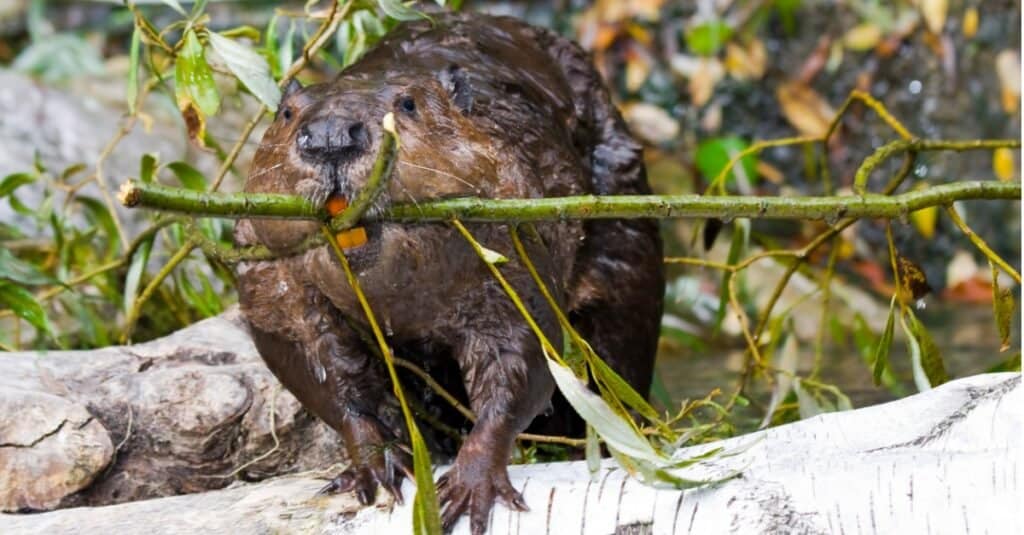
Beavers have large front teeth that can cut through wood. They can also carry rabies.
©iStock.com/belizar73
Is Grand Isle Island filled with dangerous animals? Not really. There are a few animals to be aware of that can be dangerous on the island. There are snakes on the island, but there are no venomous snakes. If you see a snake, it is best to keep your distance and not handle the snake. Most snake bites occur when someone picks one up.
There are also frogs, turtles, and salamanders on the island, but these animals are not dangerous. The mammals on the island are white-tailed deer, otters, and beavers. Of those three, beavers pose the most threat, but their attacks on humans are extremely rare. Beavers have large front teeth that can be dangerous, and there was an incident in Massachusetts where a rabid beaver attacked a 73-year-old man swimming in a remote pond. Any rabid animal poses a threat to humans because rabies is a fatal disease. There is only an average of 1-3 rabies-related fatalities in the United States each year.
Are Bees Dangerous Animals In Vermont?
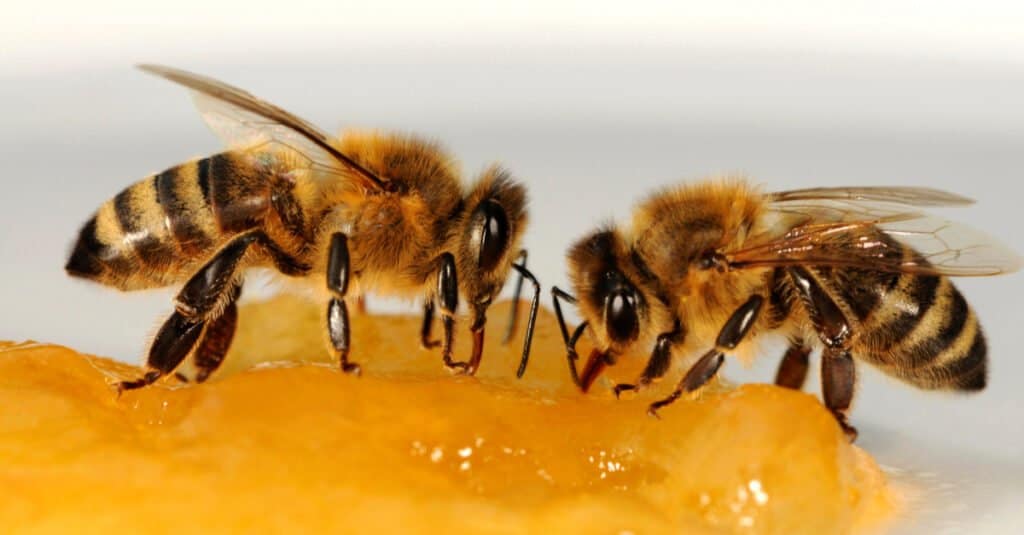
Bees are the most dangerous animals in Vermont.
©schubbel/Shutterstock.com
Vermont is known for its maple syrup, but are bees attracted to syrup like the sweet nectar they use to make honey? No, bees do not like maple syrup because it does not contain as much sugar as other sources like nectar. But there are plenty of bees, wasps, and hornets in Vermont. Bees are the most dangerous animals in Vermont. According to the CDC, there were 1,109 deaths in the United States due to bees, wasps, and hornets from 2000 to 2019. People who are allergic to bees can go into anaphylactic shock, be unable to breathe, and die if not treated immediately. Seeking medical attention is the best course of action if you have a reaction to a bee sting.
Summary of the Most Dangerous (Deadliest!) Animals in Vermont
| Rank | Animal |
|---|---|
| 1 | Bears |
| 2 | Moose |
| 3 | Rattlesnakes |
| 4 | Spiders |
| 5 | Scorpions |
| 6 | Beavers |
| 7 | Bees |
The photo featured at the top of this post is © jo Crebbin/Shutterstock.com
Thank you for reading! Have some feedback for us? Contact the AZ Animals editorial team.






